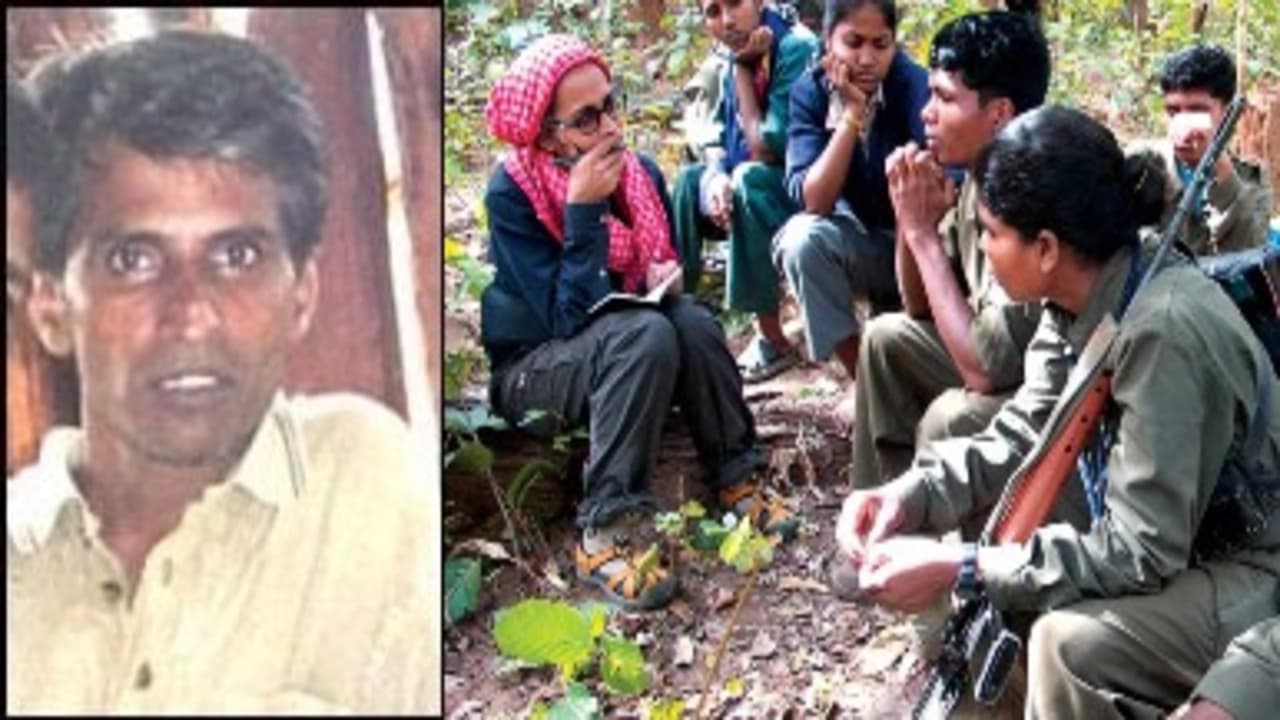Naxal Commander: How did Bhupathi, who was the face of ‘red terror’ in the forests for 40 years, suddenly bow down? Did Amit Shah’s appeal or fear of death break the pride of his weapons? What is the real story behind the surrender of Maoist commander carrying a reward of Rs 10 crore? Know who is Bhupathi?
Gadchiroli (Maharashtra): Mallojula Venugopal Rao alias Bhupathi, considered one of the most dangerous Maoist commanders in the country, finally surrendered. This dreaded Naxalite leader, who spread ‘red terror’ in the forests for 40 years, has now surrendered before the police. Bhupathi surrendered along with over 60 of his associates and over 50 weapons including AK-47 and INSAS rifles. This surrender in Gadchiroli, Maharashtra is being considered a historic success for the anti-Naxal operation.
Who is Bhupathi, who kept the Maoist network alive for 40 years?
Bhupathi i.e. Mallojula Venugopal Rao, age 69 years. At one time this name was another name of fear for the police and security forces. He was a member of the Central Committee of the banned organization Communist Party of India (Maoist) – the same organization that planned Naxalite attacks across the country. Bhupathi is known by many names – Sonu, Sonu Dada, Abhay, Master, Vivek and Venu. There was a reward of more than Rs 10 crore on his head in states like Maharashtra, Chhattisgarh, Telangana, Odisha and Andhra Pradesh.
He joined the People’s War Group (PWG) in the 1980s and gradually became the face of terror throughout the “Red Corridor”. He was also a member of the Central Military Commission of the CPI (Maoist), which decided the strategy for attacks on security forces and civilians.
How many bounties were there on Bhupathi and why was he the most wanted?
- A total reward of up to Rs 10 crore was declared on Bhupathi in different states.
- His name comes among those Maoist commanders who are considered the masterminds of deadly attacks on security forces like CRPF, STF and DRG.
- He targeted security forces several times in areas like Gadchiroli and Abujhmad.
- His planning and strategy were so precise that the security forces found it almost impossible to catch him.
Why were there so many cases against Bhupathi?
Bhupathi is accused of planning and carrying out attacks on security forces in several states. His squad was involved in dozens of attacks in Gadchiroli, Chhattisgarh and Telangana. Many CRPF, STF and DRG soldiers were martyred in his attacks. He maintained the Maoist front for many years on the Maharashtra-Chhattisgarh border and maintained an atmosphere of terror and fear in the rural areas.
Do you know whose brother is Bhupathi?
- Very few people know that Bhupathi is the brother of notorious Maoist leader Kishenji.
- Kishanji i.e. Mallojula Koteswara Rao, who was killed in an encounter in Midnapore, West Bengal in 2011.
- The two brothers together formed the “People’s War Group” in the 1980s, which later took shape as the CPI (Maoist).
- That means Bhupathi was not just an activist but also the founding face of the Maoist movement.
Why did Bhupathi surrender? What was the compulsion after all?
Two big reasons are being given behind Bhupathi’s surrender –
- Increasing security pressure: The ongoing anti-Maoist operation in the forests of Gadchiroli, Abujmad and Chhattisgarh had surrounded Bhupathi and his squad from all sides. C-60 commandos of Maharashtra, Telangana Police and special forces of the Center had almost broken the network of Maoists.
2. Disagreements within the organization: Bhupathi was now talking about leaving the path of violence and talking about peace talks, but his proposal was rejected by the organization. This created a situation of internal conflict and breakdown. At last he told his comrades, “Now surrender is the only option left.”
Did Amit Shah’s appeal show any effect?
Yes. In April, Union Home Minister Amit Shah had asked all the underground Naxalites in the country to give up their weapons and return to the mainstream. Shah had clearly said – “We will free India from Naxalism before 31 March 2026.” Bhupathi decided to surrender after this appeal. Many sources say that this policy of Shah has had a huge psychological impact in Maoist areas.
Is Naxalism ending now?
Areas like Gadchiroli, which were once ruled by Maoists, are now experiencing a wave of development and industrialization. Bhupathi’s wife Vimla Chandra Sidam alias Taraka had also surrendered a year ago. This is a clear indication that the Maoist ideology is now coming to an end and instead of guns in the forests, there is talk of schools, roads and employment. Bhupathi’s surrender symbolizes the downfall of not just an individual but an ideology. That Bhupati, who once dreamed of ‘Red Revolution’, has now returned to the path of ‘peace’.
